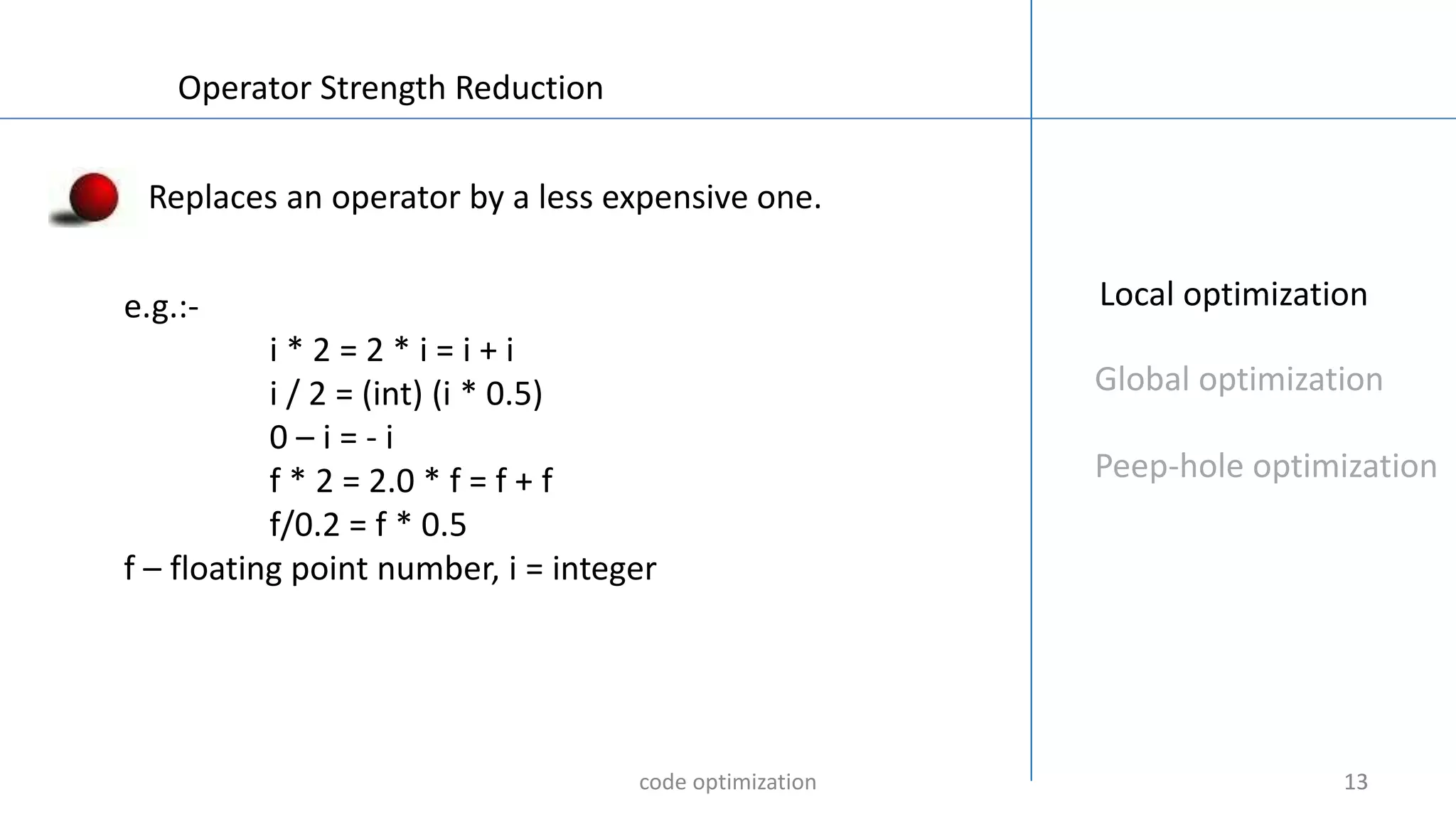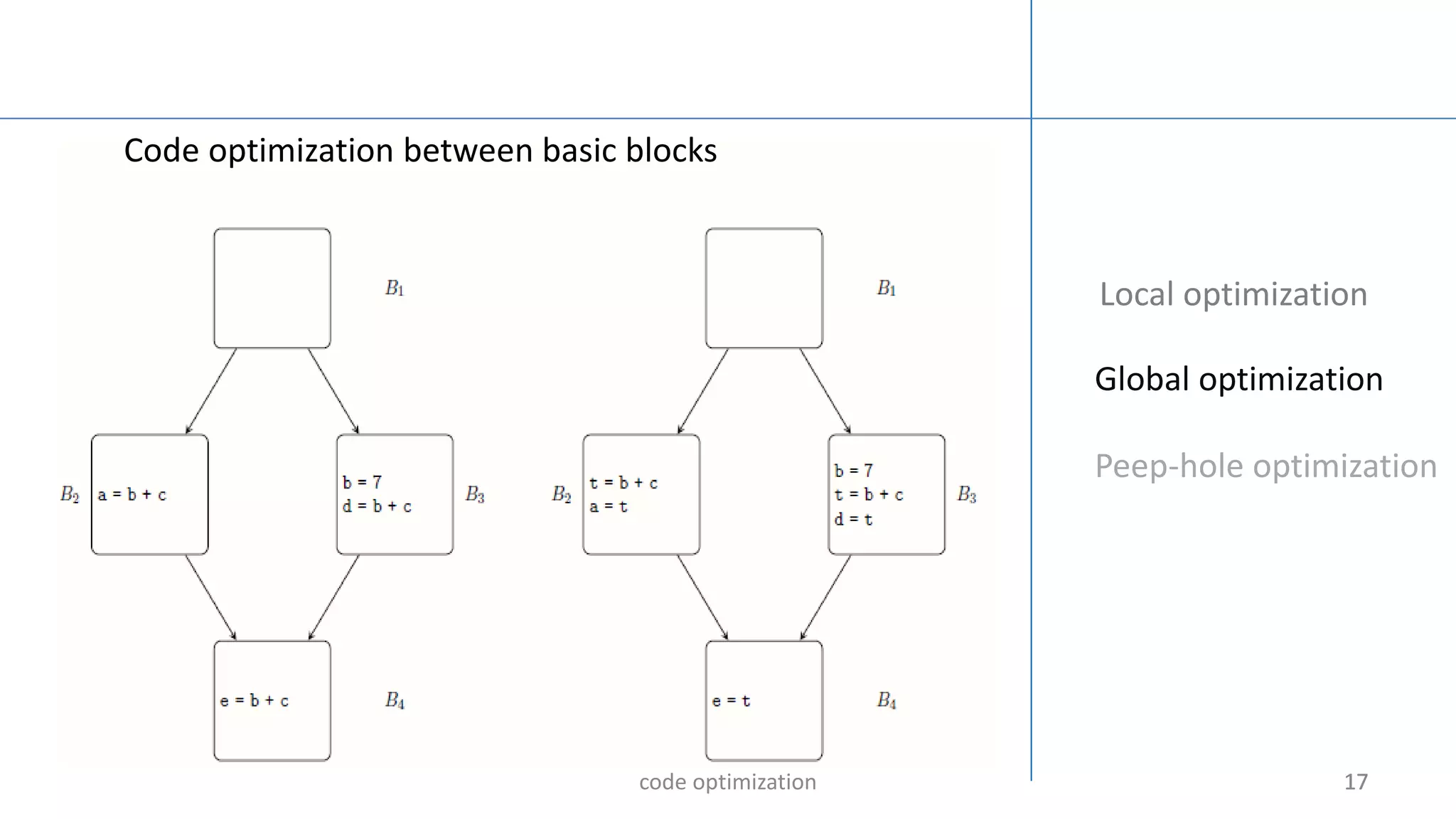Compiler code optimizations help improve the performance of generated machine code in three ways:
1) Local optimizations improve individual basic blocks without considering control or data flow between blocks. This includes constant folding, propagation, and dead code elimination.
2) Global optimizations analyze control and data flow across basic blocks through techniques like common subexpression elimination.
3) Peephole optimizations make small, machine-specific improvements by examining one or two instructions at a time, such as replacing redundant loads and stores or using architectural idioms.

















![18181818
Local optimization
Global optimization
Peep-hole optimization
How to implement common sub-expression elimination ?
An expression is defined at the point where it is assigned a value
and killed when one of its operands is subsequently assigned a
new value.
An expression is available at some point p in a flow graph if every
path leading to p contains a prior definition of that expression
which is not subsequently killed.
avail[B] = set of expressions available on entry to block B
exit[B] = set of expressions available on exit from B
killed[B] = set of expressions killed in B
defined[B] = set of expressions defined in B
exit[B] = avail[B] – killed[B] + defined[B]
code optimization](https://image.slidesharecdn.com/codeoptimization-150703103332-lva1-app6892/75/Code-optimization-18-2048.jpg)





